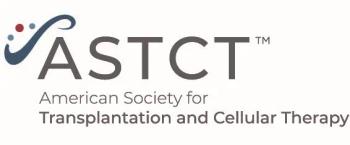
Changes to 2021 USPSTF Lung Cancer Screening Guidelines Broaden Eligibility, Reduce Racial Disparities
The 2021 United States Preventive Services Task Force lung cancer screening criteria changes successfully reduced racial disparities in eligibility by broadening screening eligibility criteria.
Changes to the United States Preventive Services Task Force (USPSTF) lung cancer screening guidelines in 2021 were successful in broadening eligibility criteria, potentially leading to a decrease in racial disparities over time, according to a retrospective analysis published in JAMA Oncology.
In total, 590 patients with lung cancer were eligible to be screened under the 2021 USPSTF criteria vs 619 per the 2012 Prostate, Lung, Colorectal, and Ovarian Cancer Screening Trial (PLCOm2012) and 445 per the 2013 USPSTF criteria. Significantly more White patients (52%) were eligible to be screened using the 2013 USPSTF criteria compared with African American patients (42%). However, the disparity was gone when using the 2021 USPSTF (White, 65% vs African American, 63%) and PLCOm2012 (White, 68% vs African American, 67%) criterion.
“As expected, broader inclusion criteria increased sensitivity, but at the cost of decreased specificity. These guidelines effectively eliminated the racial disparity in eligibility seen with the previous fixed-criteria models of the NLST and 2013 USPSTF guidelines and the [National Comprehensive Cancer Network (NCCN)] group 2 guidelines. In our study, the sensitivity and specificity of the 2021 USPSTF guidelines are close to those of the predictive model-based PLCOm2012 criteria but are much more straightforward to use in a clinical setting,” the investigators wrote.
A total of 912 patients who had been diagnosed with lung cancer were included in the analysis, 69% of whom were White and 31% who were African American. Both racial subgroups had a median age of approximately 63 years and most patients in both groups were between the ages of 60 to 69 years. White patients had a higher mean pack-years of exposure (49.0 years) compared with African American patients (37.0 years). Moreover, 75% of White patients had a pack-year exposure of 30 or more compared with African American patients (56%).
Additionally, in terms of risk factors, the African American group was less likely to self-report having chronic obstructive pulmonary disease (COPD; 30% vs 37%), a personal history of cancer (14% vs 25%), years a family history of cancer (21% vs 28%) compared with White patients. In total, 28% of White patients and 22% of African American patients had a cardiovascular comorbidity.
Additional findings from the analysis indicated that 49% of patients with lung cancer would be eligible for a lung cancer screening under the 2013 USPSTF criteria compared with 62% of patients under the NCCN group 2 criteria.
When using the control group to evaluate for specificity, the 2013 USPTF guidelines excluded the most patients (65%) followed by the NCCN group 2 guidelines (59%), PLCOm2012 (58%), and 2021 USPSRF criteria (49%).
Investigators noted that adding risk factors to the 2021 USPSTF criteria was associated with a reduction in sensitivity. Patient selection decreased with the addition of factors such as COPD history (26%), personal history of cancer (14%), and family history of lung cancer (17%). Notably, the addition of COPD history (19% vs 30%; P <.001), personal history (9% vs 15%; P = .02), and any of the 3 previously mentioned factors (33% vs 44%; P = .001) were associated with a worsening of racial disparities with less African American patients being eligible for screening, respectively.
Among the 1457 never smokers who were included in the control cohort, 32 developed lung cancer 12 months following enrollment. Of these, 75% and 59% would have been eligible for a lung cancer screening under the 2021 USPSTF guidelines and PLCOm2012 models, respectively.
Reference
Pu CY, Lusk CM, Neslund-Dudas C, et al. Comparison between the 2021 USPSTF lung cancer screening criteria and other lung cancer screening criteria for racial disparity in eligibility. JAMA Oncol. 2022. Published online January 13, 2022. doi:10.1001/jamaoncol.2021.6720
Newsletter
Stay up to date on recent advances in the multidisciplinary approach to cancer.



















































































